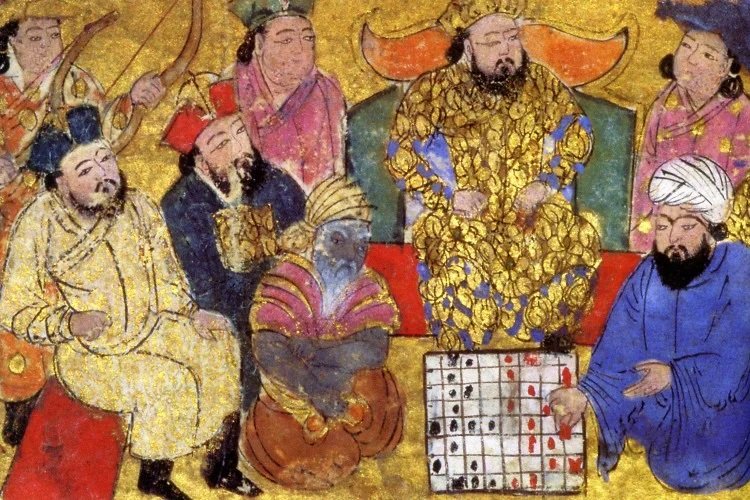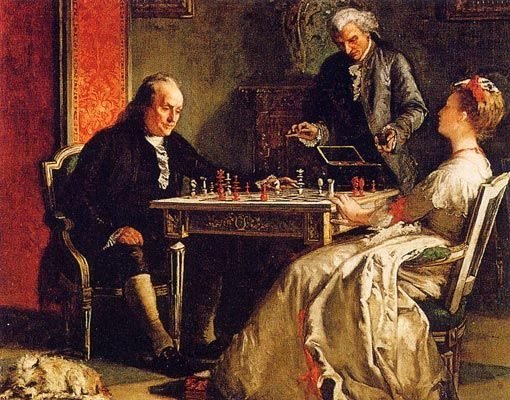The Fascinating History of Chess
Coming out of the concept of positional chess was hypermodernism, or the idea of controlling the center with pieces, not just pawns. The idea arose in the 1920s…
BY HRTHA RAJIV - GREAT VALLEY HIGH SCHOOL - HL MEMBER & HN COLUMNIST
The game of chess that we play today has been enjoyed by people across the globe since ancient times, albeit in many different variations. Once upon a time, the game of chess was played on a board with over a hundred squares and dice. One die was used to determine which piece was moved. This is quite different from the way chess is played today on a board with 64 squares and without the use of dice! The pieces have evolved ever since the game’s origination, which occurred sometime in the early years of the common era. Chess truly is a global game: ancient pieces have been found in Russia, China, Central Asia, India and Pakistan. As time passed, chess diffused from its origins leading to the introduction of different approaches to the game.
One of the earliest forms of the game was called chaturanga, and it originated in Northwest India around the 6th or 7th century. Charturanga is a Sanskrit name for a battle formation used in the Mahabharata, an epic. Eventually, after a few rule and piece changes, Chaturanga became Shatranj, which resembles modern chess more closely. The changes to rules included a requirement that all the pieces (excluding the king) must be captured, or that the king must have no available squares remaining in order for a game to end. This change came around 600 CE. The game then spread from southern Central Asia to the North, West and East along a variety of routes. The biggest contributors to the diffusion of chess are the travelers on the silk road and Buddhist pilgrims. Chess eventually reached China around 750 CE, leading to the creation of a new variation of chess: Chinese chess. Some key features of Chinese chess (called Xiangqi) are that it lacks a queen, unlike international chess, and there is a river in the fifth rank as well as a palace. These affect the movement of some pieces. Pieces are placed on the lines between squares rather than on the squares themselves. From there, chess arrived in Korea and Japan by the time the eleventh century came around. This was not the end of chess’s journey to bring a new form of entertainment.
Chaturanga chess art
Around the time when chess was being played all over Asia, the game also began to gain players in Europe. The Persian, Byzantine and Arabian Empires all contributed to the game’s presence in Europe. In the enormous region that once was the Arabian Empire, historians have found evidence that chess was played in modern day Sicily and Spain, in addition to Northern Africa. Then, the Eastern Slavs took chess with them to Kievan Rus. There also were the Vikings who brought it along with them to Iceland and England. The opinion that chess is a royal game had become prevalent by the fifteenth century, due to the ornate set designs that used semi-precious stones in the pieces used by royals such as Peter the First of Russia. In addition, by the end of the 15th century, the game had a large number of followers.
Since chess is so old, it has many interesting historical aspects. For example, the very first recorded game was between a historian and his student in Baghdad. In addition, in 1831, seventy-eight walrus ivory chess pieces from the 11th or 12th century belonging to the vikings were found on the Isle of Lewis, Outer Hebrides. After 1475, versions of the queen and bishop resembling the modern versions were found. Castling and en passant were also created during the 15th century, though it was not until the 17th century that they became widely used. The earliest variant of modern chess began in the 16th century. The modern Staunton style chess set did not come around until 1835, when it was designed by Nathaniel Cooke. The toy makers Jaques of London manufactured and sold the chess set, and it was endorsed by Howard Staunton. The design was awarded a patent in 1849.
One of the first chess theoreticians was the Spanish priest Ruy Lopez. In 1561 he published a chess book, in which one of his recommended methods for winning was playing with the sun in your opponent’s eyes. In the 18th century, Francois-Andre Philidor, a French chess player, was also starting to publish his thoughts on how the game should be played. His comprehensive book came out in 1749 with his opening ideas and his famous rook and pawn endgame thoughts. The book’s most famous quote was “The pawns are the soul of chess.” By the 19th century, clocks were used with the games in order to reduce the game’s length, which by that point spanned fourteen hours on average. During that time it was popular to play chess in an aggressive, sacrificial way. One such player who subscribed to this was Paul Morphy. While on his tour of Europe, the American master beat many famous opponents such as Adolf Anderssen, Louis Paulsen, Daniel Harrwitz, and the Duke of Brunswick and a French count in the famous Opera game. Chess was played this way until a new style began to gain more followers.
When Wilhelm Steinitz in 1886 became the first World Chess Champion, he advocated playing in a more conservative, positional style. He won many games by accepting his opponents’ gambits, following that by closing the position and slowly pushing a win out. In the same style, Emanuel Lasker played Steinitz in the 1894 World Chess Championship, winning 10-5. Lasker would keep the title for twenty-seven years. Following in his predecessor’s footsteps, José Raúl Capablanca used positional chess to gain the title in 1921. Many prominent members of the chess world consider his style to embody the concept of positional chess. For example, Capablanca would often take a small endgame advantage and use it to win a game. Coming out of the concept of positional chess was hypermodernism, or the idea of controlling the center with pieces, not just pawns. The idea arose in the 1920s, and it was supported by Aron Nimzovich, Efim Bogolyubov, Richard Reti and Ernst Grunfeld among others. Some examples of hypermodern openings include Grunfeld, Benoni, the Indian defenses and the Alekhine defense, among others. Alexander Alekhine, after whom Alekhine’s defense was named, was thought of as both a tactical and positional player. He was World Champion from 1927 to 1935, and from 1937 until his death in 1946.
Perhaps one of the most famous eras of chess was the Soviet Union chess era, during which the USSR dominated the chess scene. All but two world champions from 1927 to 2006 were from the Soviet Union. The world champions were Alekhine, Botvinnik, Kasparov, Tal, Spassky, Smyslov, Petrosian, Karpov and Kramnik. There were a variety of styles, with the first three being dynamic players, Tal and Spassky being very tactical and the final four tending to play more positional chess. One of the most influential players of this group was Mikhail Botvinnik, the World Champion from 1948 to 1963, with just two one-year breaks in between. In addition to this accomplishment, Botvinnik trained three future World Champions: Karpov, Kasparov and Kramnik. The history of chess is rich with interesting facts and provides insight into life over a thousand years ago. This article barely scratches the surface. The additions added by each culture that learned the game truly connects every individual who plays chess.
Sources:


